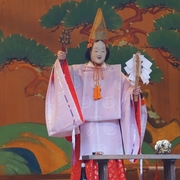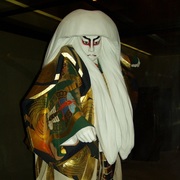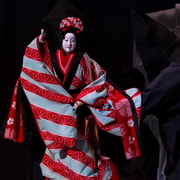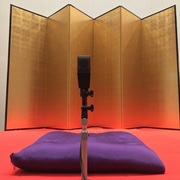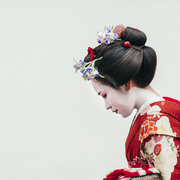In recent years, there are many foreign tourists in Japan.
You may have the experience that foreigners have seats next to you when you eat out.
Then, do you think you can answer the question from foreigners asking “What kind of performance is Kabuki?”
Indeed, most of you know the word “Kabuki”, but it is hard for you to explain about it.
Here, let’s walk through the basic information of Kabuki such as;
- The origin of Kabuki
- Ie-no Gei (performance of the family)
- Myoseki (successive names) and Yago (stage family name)
Those are the basis of the history, programs, directions of Kabuki.
Please enjoy the basics of Kabuki.
Word Origin of Kabuki is “Kabuku (to be Bizarre)”
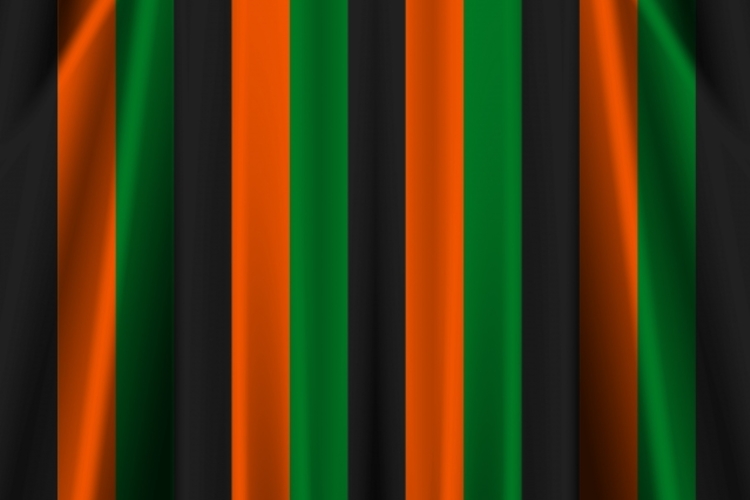
W hat is “Kabuku”?
The current word of “Kabuki”, literally meaning Ka (sing), Bu (dance) and Ki (skill), was used as “phonetic equivalent” after ages.
The word origin lies in a verb “Kabuku”.
“Kabuku” means to perform freely, or to be bizarre.
From the Azuchi-Momoyama period(1573-1603) to the beginning of the Edo period(started from 1603), young people parade on streets with bizarre outfits which was the trend at that time, and form factions to act violently.
People called them “the ones acting bizarrely = Kabuki-mono (person)”.
Kabuki-mono was admired by the young and it became one of the traditions of the capital in Kyoto that they played with prostitutes at Chaya (tea house).
A ppearance of “Izumo no Okuni”
Then, one woman appeared, who imitated Kabuki-mono, to follow its trend.
That woman is the ancestor of Kabuki, named “Izumo no Okuni”.
This was the very beginning of the history of Kabuki.
The Roots of Kabuki lie in Basara, Sarugaku, Noh, Kyogen

W hat is Basara?
In the early Muromachi period (the Nanbokucho period, 1336-1392), aesthetic sense called “Basara” was born, which denied the class system such as the Imperial Court and court nobles and enjoyed showy behaviors and stylish and gorgeous clothing.
Shugo Daimyo (feudal lords) with those Basara aesthetic sense at that time was called as “Basara Daimyo”, which was connected to “Kabuki-mono” over the Sengoku era(from around the end of 15th century to the end of 16th century).
S arugaku: Roots of Performing Arts
Noh and Kyogen used to be called as “Sarugaku” until the Edo period(1603-1867).
Sarugaku was developed with Japanese traditional performing arts and mimicking based in “Gigaku” and “Sangaku” introduced from China before the Nara period(710-794).
The dance part was developed to Noh, and the humorous part and mimicking turned to Kyogen.
F rom Sarugaku to Kabuki
The early Kabuki had plenty of essences of Sarugaku, which was traditional performing arts.
Especially from the end of the Tokugawa shogunate to the Meiji period(1868-1912), Kabuki played the programs of Noh and Kyogen to make it “noble” from entertainment of ordinary people.
Still now, the most popular program “Kanjincho (Ataka in Noh)” and “Funa Benkei (Funa Benkei in Noh)” are representative and are called as “Matsubame-mono” as those are performed at Matsubame stage, which imitates Oimatsu (old pine tree) drawn on Noh stage.
No “Director” at Kabuki
Normally, theaters have “a director”, who instructs and controls the direction on stage, but Kabuki does not have any directors.
The main actor (called as “Shin-no Yakusya” in Kabuki) plays the role of a director to manage the program.
That is why the same program has different direction from each Shin-no Yakusya, which shows that each actor has different understanding of each program.
This difference on direction is unique to each actor and develops to one of the repertoires, which is called as “Ie-no Gei (performance of the family)”.
Kabuki Juhachiban
The most well-known Ie-no Gei is “Kabuki Juhachiban” of the family of Danjuro Ichikawa.
This is the selection of “Aragoto (exaggerated performances)”, which was the favorite arts of the Ichikawa family completed by Danjyuro the 7th, which includes “Kanjincho”, “Sukeroku”, “Zan” and so on.
Myoseki and Ie-no Gei
Those Ie-no Gei was succeeded by the Kabuki actors such as Danjuro Ichikawa, Ebizo Ichikawa, Kikugoro Onoe with their names in the way of Shumei (name succession).
M ain Ie-no Gei
The following are major Ie-no Gei.
・ Kabuki Juhachiban / Shin Kabuki Juhachiban (Danjuro Ichikawa family)
・ Shin-ko Engeki Jussyu (Kikugoro Onoe family)
・ Enou Jussyu (Ennosuke Ichikawa family)
・ Kouga Jussyu (Sojuro Sawamura family)
・ Ganjiro Junikyoku (Ganjiro Nakamura family)
・ Shuzan Jussyu (Kichiemon Nakamura family)
・ Kataoka Junisyu (Nizaemon Kataoka family)
Kabuki Actor called as “Kawara-mono” and Yago
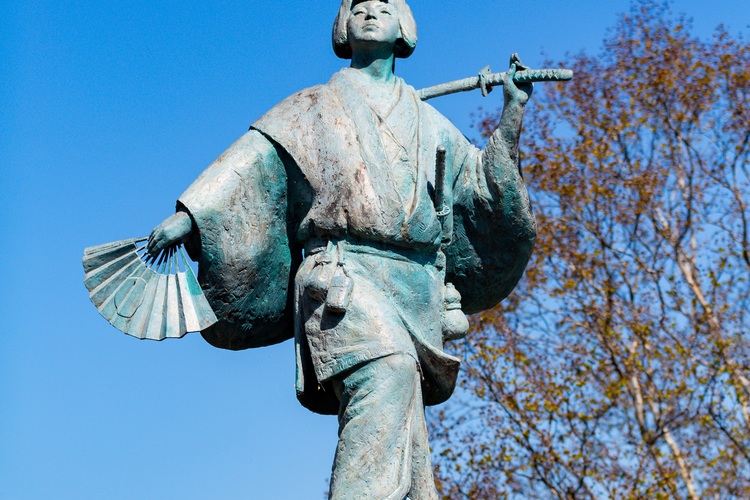
K abuki Actors, not admitted as Ordinary people
Performers including Kabuki actors used to be called as “Kawara-mono”, which was “Hinin (it is discriminatory word meaning people beneath a person)” under segments of society.
In short, they were not admitted as ordinary people.
However, they came to be classified as Ryomin (law-abiding people) and the part of segments of society.
Y ago to Gain the Status of Merchants
Yet, they did not know how to change their lives as Ryomin since they had to hide their living on backstreets.
Then, the actors whose families originally were merchants, opened shops and named themselves with Yago (literally shop name, and stage family name in Kabuki).
Eventually, other actors followed it as a good idea.
Running a shop made money and made it easy to call themselves as “a merchant”, which spread among the Kabuki actors.
It was the beginning of Yago as a stage family name in Kabuki.
Main Yago
The following are major Yago.
・ Narita-ya (Danjuro Ichikawa, Ebizo Ichikawa)
・ Otowa-ya (Kikugoro Onoe, Kikunosuke Onoe, Shoroku Onoe)
・ Narikoma-ya (Utaemon Nakamura, Shikan Nakamura)
・ Korai-ya (Hakuo Matsumoto, Koshiro Matsumoto, Somegoro Ichikawa)
・ Kinokuni-ya (Sojuro Sawamura, Tojuro Sawamura)
・ Narikoma-ya (Ganjiro Nakamura)
・ Yamato-ya (Mitsugoro Bando, Tamasaburo Bando)
・ Matsushima-ya (Nizaemon Kataoka, Ainosuke Kataoka)
・ Sawagata-ya (Ennosuke Ichikawa)
・ Harima-ya (Kichiemon Nakamura)
・ Takashima-ya (Sadanji Ichikawa)
・ Tennoji-ya (Tomijuro Nakamura)
World of Kabuki with Deep Backgrounds
Those are the basic information about Kabuki, but there are more deep backgrounds on the world of Kabuki.
Like the history until today, unique stage sets, interesting programs, Kabuki has so many essences to explore.
For now, it is time to say “allow me to excuse myself”.
Thank you for reading.



